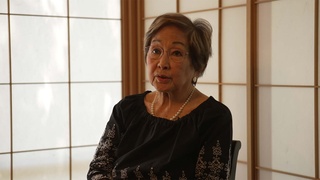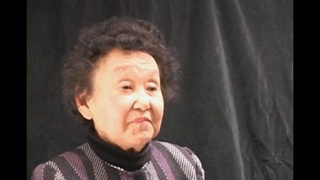Interviews
Working in cane fields as teenager to supplement family income
Well, when I was 12, 14 years old, all the kids used to work in the cane field those days during the summer. You worked for about maybe two and a half months during the summer and try to make as much money as you can. And those days, you work a whole day and they pay you only 25 cents a day. But, we all had to work to help because my father was working in the cane field all day, 12, 14 hours a day, and he'll come home and make only about $70 or $80 a month. So when you have seven kids, you know, that's not enough. So, during the summer, my brother, myself, my sister, we all try to help out to try to make as much money we can. So, I used to work in the cane field, get up maybe 4 o'clock in the morning and go to cane field and cut grass. And I used to hate that job because, you know, the leaves would cut you and all that.
Date: December 16, 2003
Location: Hawai'i, US
Interviewer: Art Hansen, John Esaki
Contributed by: Watase Media Arts Center, Japanese American National Museum.
Explore More Videos

Adoption Story
(b. 1939) a businesswoman whose family volunterily moved to Salt Lake City in Utah during the war.

Doing chores
An expert researcher and scholar on Japanese immigrant clothing.

Spending time with children
(b.1926) Democratic politician and three-term Governor of Hawai'i


Going back to Hawaii
An expert researcher and scholar on Japanese immigrant clothing.

Clothes of plantation workers
An expert researcher and scholar on Japanese immigrant clothing.

Brother leaves for war, survival
An expert researcher and scholar on Japanese immigrant clothing.

Food growing up
(b.1948) Nikkei from Southern California living in Japan.

Relationship with my father
(b. 1920) Incarcerated during World War II. Active member of the Japanese Canadian community


Arranged marriage
(b.1912) Japanese Canadian Issei. Immigrated with husband to Canada in 1931

Sugar-beets farm in Alberta
(b.1924) Japanese Canadian Nisei. Interpreter for British Army in Japan after WWII. Active in Japanese Canadian community

Marrying Bob against family’s wishes
(b.1920) Japanese Canadian Nisei. Established the Ikenobo Ikebana Society of Toronto

Growing up in a Japanese American family
(b. 1967) Hawai`i-born professional fighter in Japan

Death of sister in October 1942
(1915 - 2011) Nisei florist who resettled in New York City after WW II. Active in Japanese American civil rights movement
